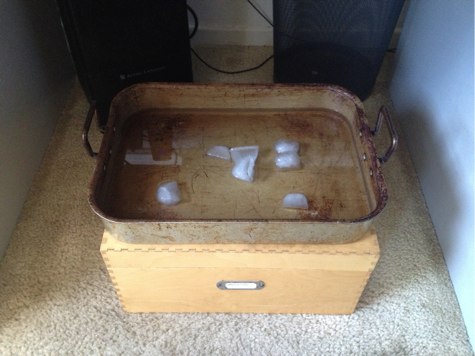When I tell people about the Specific Carbohydrate Diet, their first reaction is usually a brief take of mock shock and/or sympathy over how terribly restrictive it is, followed immediately by a round of that game no one seems to tire of, "Can You Eat X?" But really, the SCD, a diet for people with Crohn's and ulcerative colitis (and, believe it or not, autism) isn't any more restrictive than diets for people with diabetes or high cholesterol. And I'm way, way happier forgoing bread and pasta and fries than I would be suffering through them the way the folks with hypertension do—WITHOUT SALT. Sweet Jesus of Nazareth, talk about pointless.
No, after 11 years on and off of it, I can honestly say that the only place SCD really falls short is in the area of convenience. Since almost all processed foods are out—illegals like starch, sugar, and the murky "flavorings" are almost always lurking therein—you're down to preparing most stuff yourself or finding quality places you really trust. Things have gotten far easier since the advent of the Paleo Diet, which mimics ours in many ways (and again, which I find far worse—WTF, no cheese??), but it's still dodgy, eating out, not to mention expensive.
* * * * *
When you are literally chief cook and bottle-washer, you end up eating the same things over and over, especially when dietary needs get tricky. My prayer to the dating gods is for them to deliver me a loving chef with something to prove. Until then, I see myself sticking to the same six or seven menu items, swapping them out seasonally, or when I get bored.
For example, I went through a years-long omelet phase, varying only fillings, and only under duress. When I burned out on omelets a couple of years ago, I switched to a hard-boiled egg and a bowl of SCD-legal yogurt with seasonal fruit.
Lunch and dinner are easy in cool weather. I make big batches of soup, chili, stew, and so forth, freeze them in portions, and pull them out as needed. Even the early part of summer is fine: I make a big salad every day, and that's that. For years, I did the Meat Blueprint Salad. This summer, I switched to greens, tuna, peppers, and avocado, dressed simply with oil and vinegar.
But when hell sets in here, usually sometime in late August, the idea of even this much prep is exhausting.
So I swing by the deli, pick up 1/2 lb. of turkey and 1/4 lb. of cheese, some romaine lettuce, and a gritty, sour mustard free of illegals, and eat these until the heat breaks. Over the sink. Quickly, so I can get the hell out and back into some library or coffee shop that's air-conditioned.
If you're new to the SCD, know that even deli meats usually are not safe. They are pumped full of disgusting things to make them look pretty and stay stable; they are absolutely processed foods are not part of the program of "fanatical adherence" that our beloved founder Elaine Gottschall wisely advised maintaining if you want to see results. What you can do, in this case, is track down a minimally-to-unprocessed turkey breast and roast it yourself. Roasting will heat up your kitchen like mad, but if you do it in the cool of the evening, it's slightly less heinous. Portions freeze beautifully, and a breast will last a good long time.
There's a lovely kind of comfort to be had, having the same things over and over. And there's a correspondingly wonderful feeling of gratitude and delight when I get to switch things up again.
(Someone remind me of this when I have to move, okay?)
xxx c




















